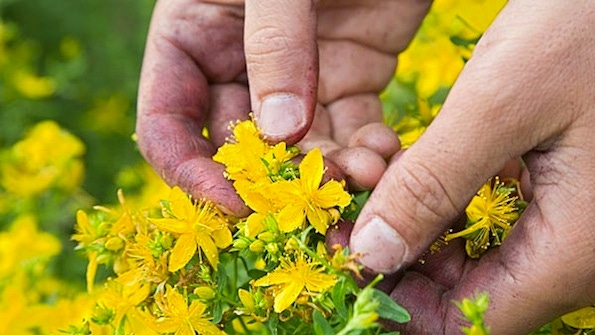One personal care company takes the growing practice of its botanicals so seriously it farms most of them itself: Weleda.
August 4, 2013

When it comes to food, we commonly scrutinize where ingredients come from. With beauty products, ingredients are increasingly coming under the microscope as well, but not usually how a product’s botanicals were grown—a lavender body lotion doesn’t typically specify where the lavender came from or how it was grown. One personal care company, though, takes the growing practice of its botanicals so seriously it farms most of them itself. And not just organically, but with biodynamic practices.
Based in Germany but available throughout the U.S. at natural products stores, Weleda is in a class of its own when it comes to natural standards.
Weleda’s botanical ingredients are grown using a farming method known as Biodynamics. Now in use in various areas of the world, Biodynamic farming was actually developed by one of Weleda’s founders, Austrian scientist, philosopher and educator Rudolf Steiner, all the way back in 1924. Steiner delivered the very first course in Biodynamic farming in response to a request from farmers who had noticed degraded soil conditions and deterioration in the health and quality of crops from the use of chemical fertilizers.The methods he evolved have been in use at Weleda ever since.
“Biodynamics treats the whole farm as one living ecosystem,” says Jennifer Barckley, director of communications for Weleda North America. Insects and weeds are controlled by essential oils and various herbs as well as other natural ways. Live pests, such as mice are deterred rather than killed. Weeds are managed manually, too. A quartz-water mixture is sprayed over crops during the wet season to prevent fungal diseases.
Universal ecosystem
The biodynamic philosophy also takes into account the heavens. “If you’re looking at the whole ecosystem, it includes looking at the planets and looking at the rotation of the sun and moon,” Barckley says. “While that may sound a little sci-fi to us today, that’s really how it was done when organized agriculture actually started. It’s a critical component that affects the growth patterns of plants and the natural rhythms on the plot of land where we’re growing these ingredients.”
Just as the entire ecosystem is interconnected, so are the Weleda facilities. The company’s production is vertically integrated, with production facilities right next to the fields. Ingredients are picked at the perfect time for their potency and sent straight to manufacturing, where they're made into products right away. Many crops are ideally picked at sunrise, and within an hour or so are then formulated into ingredients.
The Weleda gardens are located in the picturesque Swabian Alb of southern Germany. It is a beautiful gently rolling landscape dotted with forests, farms and small villages. “From Weleda’s offices in a small town, you walk up a hill and look down into the fields,” says Barckley. “From the top, you are assailed by a plethora of wonderful smells, and the colors of the flowers and the crops are very brilliant, like nothing you’ve ever seen. It’s obvious these plants are extremely healthy.”
Weleda knows that beautiful products start in the soil, and that the quality of the soil will reflect the quality of their products.
Weleda’s comprehensive catalog includes a complete line of skin care products, items for baby and mother care, as well as homeopathic medicinal preparations. Find out more about them at usa.weleda.com.
You May Also Like


